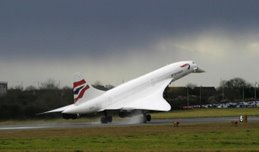It is believed that after the conflict that led to the fall of the moai, a new cult emerged. The surviving population developed new traditions to allocate the remaining, scarce resources. An intriguing result of the social changes was the Birdman Cult (Tangata Manu), probably evolving from earlier bird rites. It seems that it was created around 1680, after a military coup, and consisted on a competition run every spring. Then, men of importance or their proxies would descend the cliffs below the stone houses of Orongo, dive into the sea and swim three kilometres across shark-infested waters to Motu Nui, a nearby islet, to search for the season's first egg laid by a manutara (frigate, a pelagic sea bird). The first swimmer to return with an egg in a small reed basket tied around his neck would be named "Birdman of the year" and secure control over distribution of the island's resources for his clan for the year. He would shave his head, eyebrows and eyelashes, be painted white, and retire to Rano Raraku, where he would live for a year, under strict restrictions due to his sanctity and ritual power - tapu! He did not wash, cut his nails or bathe during the one year confinement. His wife could not enter his house, nor he hers for five months. The tradition was still in existence at the time of first contact by Europeans, and it ended in 1867.

"GROUP PHOTO at the Mirador on the road uphill to the ceremonial site of Orongo"

"RANO KAU - Dramatic view of the lake in the crater, which is covered with floating mats of vegetation, making it unfit for swimming or drinking..."

"RANO KAU - The caldera seen from the Mirador, looking south towards Orongo in the far distant upper right and the sea"

"RANO KAU - From the same spot, but looking east over the mile-wide crater lake"

"RANO KAU - The Knife edge crater drops almost three hundred meters to the sea"

"GROUP at Rano Kau"

"BIRDMAN"

"MOTUS, including Motu Nui"


"BIRDMAN and BIRDWOMAN at the Orongo ceremonial complex!"

"STONE HOUSES at Orongo"

"PETROGLIPHS - Lots of rock carvings can be found on Easter Island representing animals, notably birds or birdmen"

"It could be the ESMERALDA, the Chilean naval training ship, but it isn't..."


"THE VINAPU COMPLEX on the east side of the Rano Kau peninsula, just south of the far end of the air runway, is a site unique in Easter Island. Thor Heyerdahl would use this Inca-like stone ahu as an indicator that there was an important Peruvian influence on the island"

"AIRPORT RUNWAY - Point of departure either West for Tahiti or East for Santiago"













.JPG)




















































